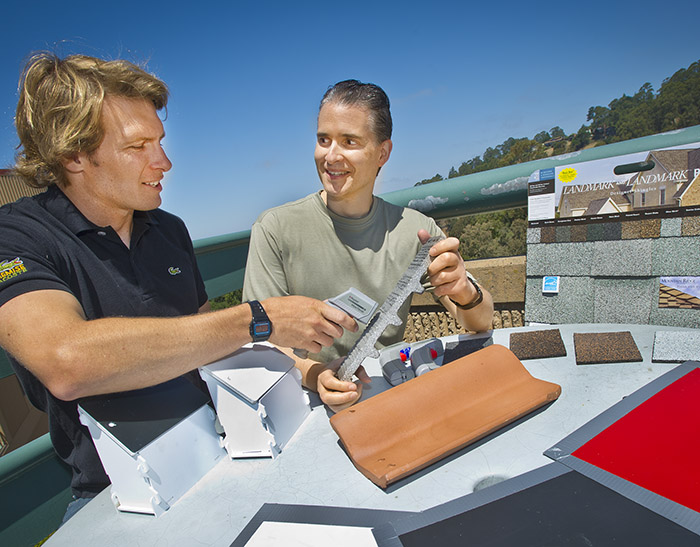Cool Roofs & Walls
Cooling buildings, cities, and the planet by making roofs, walls, pavements, and cars cooler in the sun.
 Urban Heat Island Effect
Urban Heat Island Effect
Roofs and pavements comprise more than 60% of urban surfaces in some U.S. cities. On a sunny summer afternoon, these typically dark, dry surfaces get warm in the sun and therefore heat the air. The air in nearby rural areas tends to be cooler, because the rural surfaces are more reflective (absorbing less sunlight) and wetter (dissipating some solar heat gain by evaporating water). This elevation in urban air temperature over rural air temperature on a summer afternoon is called the summer urban heat island (UHI) effect.
Other contributors to summer urban heat islands include human activities that warm the outside air, such as air conditioning, manufacturing and transportation. UHIs can increase energy use, degrade air quality and aggravate heat-related illnesses in our cities.
A Solution: Cool Materials
Summer urban heat islands result from solar heating of dark, dry urban surfaces. Sunlight is absorbed by dark pavements and roofs, which in turn warm the air. Air itself absorbs very little sunlight, but can be heated as it flows over warm surfaces.

The Heat Island Group at Berkeley Lab seeks to cool cities in summer. Our main approach is to reduce absorption of sunlight by buildings and pavements. The simplest way to reduce solar absorption is to replace dark surfaces that strongly absorb sunlight, such as black or gray roofs, with light-colored surfaces that strongly reflect sunlight, such as white roofs.
Interestingly, slightly less than half of sunlight is visible to the human eye. Light-colored surfaces stay coolest because they strongly reflect both visible and invisible sunlight. However, when dark surfaces are needed for aesthetics or to reduce brightness, one can use special "cool-colored" materials that stay moderately cool by reflecting only the invisible component of sunlight.
We also study urban trees, which cool the air by evaporating water and cool surfaces by providing shade.
